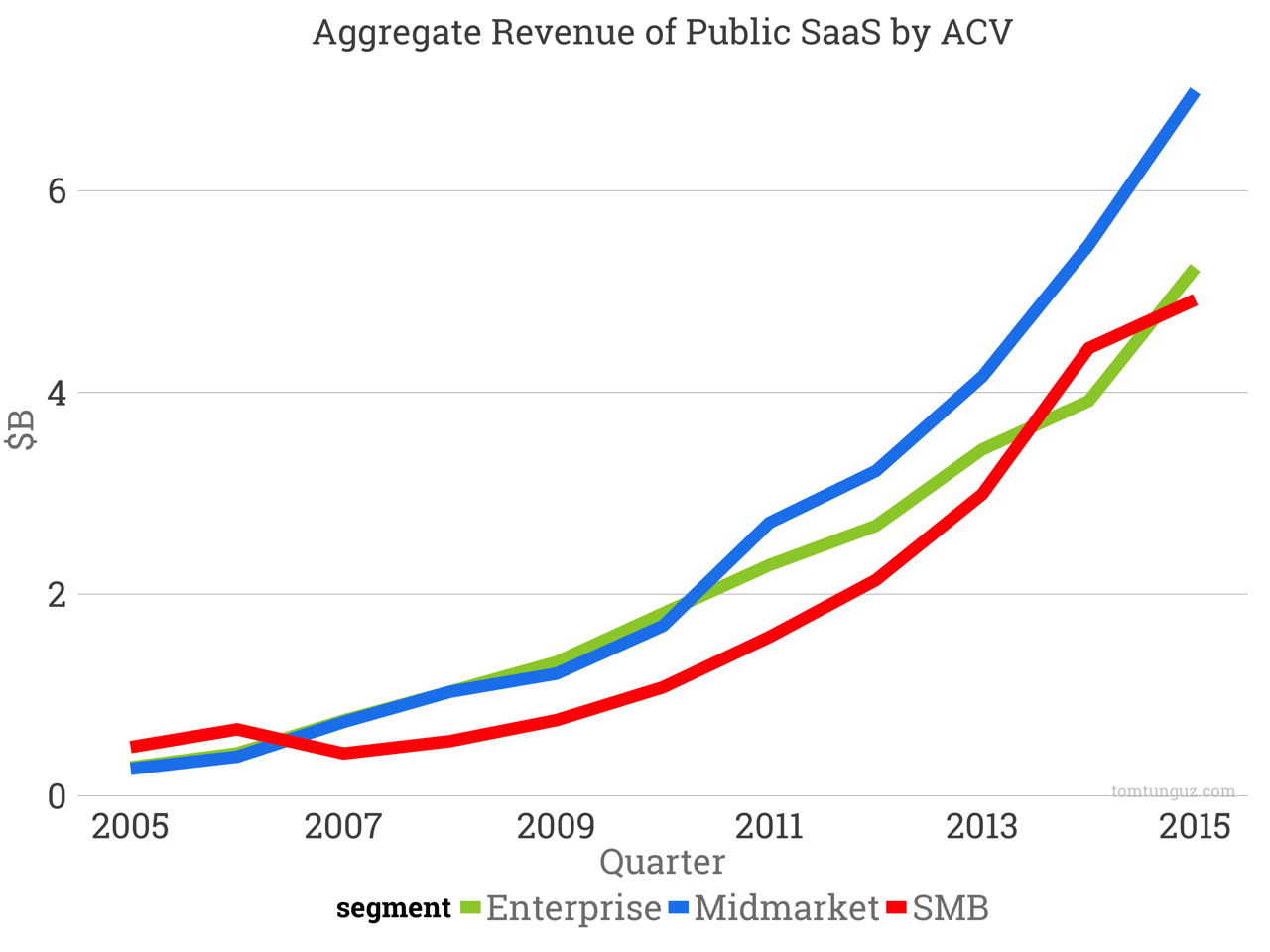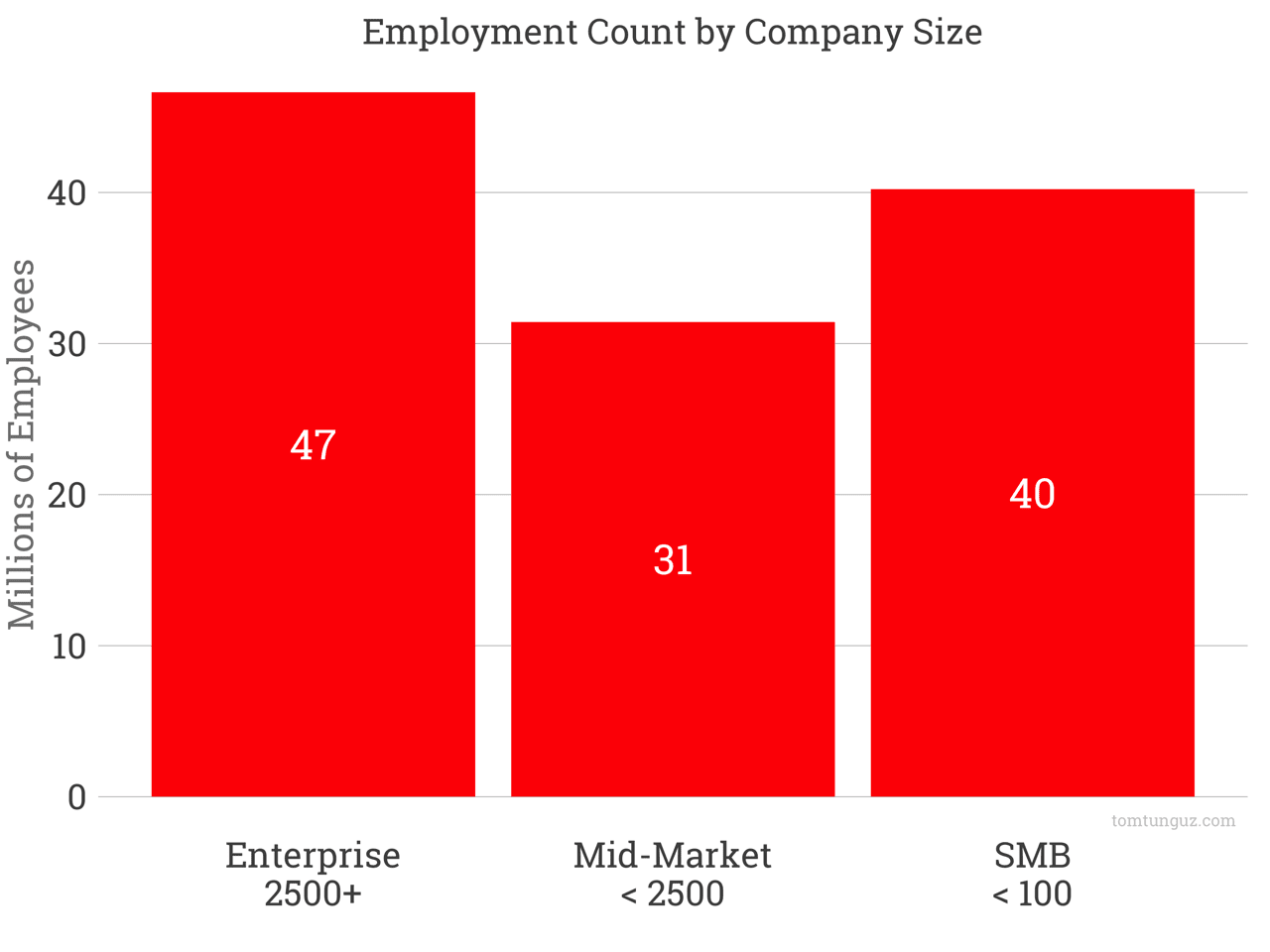One question founders often ask is which is the right customer size to target? What is the optimal ACV for a SaaS startup? One way of answering this question is to reflect upon the success of previous SaaS companies and analyze how they did it.
The chart above plots the total revenue of publicly traded SaaS companies by ACV bucket. Enterprise companies average contract value is greater than $100,000. Mid-market companies span $10,000-$100,000, and SMB companies generate less than $10,000 per year per customer. These demarcations are not industry-standard, but my own.
Surprisingly, the share of revenue across these three buckets is equal. In addition, the number of companies fitting into each bucket is also equal. So, on average, a SaaS company in any of these three segments generates roughly equivalent revenue. The size of customer does not materially impact the opportunity to generate revenue.
Why is this? There are a similar number of employees in small companies, mid-market companies, and enterprise companies. The bar chart above, using data from the U.S. Census in 2013, indicates that 47 million people are employed by enterprise companies, 31 million people work at mid-market companies and 40 million people hold posts at small businesses. So, the theoretical market for product that is sold by the seat is roughly equivalent across these three segments.
In addition, many of these SaaS companies straddle buckets. It is not uncommon for a SaaS company to start in the small to medium business segment and push into the mid-market. Or develop a beachhead in the mid-market and drive into enterprise.
Last, it’s rare to find a SaaS business with winner take all dynamics across customer sizes. Workday may dominate the enterprise part of the human capital software market, but it has ceded the mid-and small business market to others. The opportunities before software companies are large enough to support several winners. Unlike the consumer world, network effects that span customer segments are rare.
There are many different ways of building a very successful SaaS company and that this analysis further supports that conclusion. Whether you choose to start a company serving the 5 million small to medium businesses or the 1000 largest companies in America, your revenue opportunity will not meaningfully change. The more important consideration is ensuring that your product, marketing, and go to market strategy aligns with customer base.
Note: I have removed Salesforce from this analysis because it is an outlier and also quite difficult to categorize. At the time it was public, Salesforce was a squarely mid-market vendor, but it has evolved to be more of an enterprise vendor. In addition, Salesforce’s revenue is five times the size of the next player. If it were to be included, it would double the midmarket line in blue.

